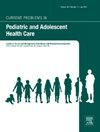How the public’s knowledge, attitudes, and practice intersect with scientific evidence about fluoride
IF 3.7
4区 医学
Q1 PEDIATRICS
Current Problems in Pediatric and Adolescent Health Care
Pub Date : 2025-06-01
DOI:10.1016/j.cppeds.2025.101768
引用次数: 0
Abstract
For over 75 years, community water fluoridation has been implemented as a public health strategy to reduce dental caries. While early studies suggested dramatic reductions in dental caries, recent evidence indicates that the benefits of community water fluoridation are more modest. Concurrently, concerns have grown over rising rates of enamel fluorosis and possible links between fluoride intake and lowered intelligence in children and thyroid hormone disruption, even at exposure levels found in fluoridated regions. This first part of this paper discusses the historical context and current scientific evidence on the effectiveness of community water fluoridation and safety of systemic fluoride. The second part presents findings from a fluoride survey conducted with 8011 adults in Canada and the U.S. The survey assessed knowledge about fluoride, public perceptions of the risks and benefits of community water fluoridation, and fluoride use with young children. Overall, 60 % of respondents correctly identified why fluoride is added to drinking water. Knowledge of community water fluoridation was higher among older, more educated, and White participants. Among those familiar with community water fluoridation, 51 % expressed support, 27 % opposed it, and 25 % were neutral. Support was primarily driven by confidence in its safety and benefits, while opposition was driven by safety concerns and perceived violations of personal freedom. Trust in public health officials was higher among supporters (87 %) compared with non-supporters of community water fluoridation (52.1 %). When presented with hypothetical risk-benefit scenarios, participants consistently prioritized the prevention of potential health risks, such as reduced IQ, over the relatively modest dental benefit of preventing one cavity. The survey also revealed that most parents report using more fluoride toothpaste for young children than recommended, suggesting a gap in adherence to safe fluoride use guidelines. Our findings highlight mixed public views on community water fluoridation and knowledge gaps surrounding fluoride toothpaste use with children, underscoring the need for clear, evidence-based communication about fluoride exposures.
公众的知识、态度和实践如何与氟化物的科学证据相交叉。
75年来,社区饮水氟化作为一项减少龋齿的公共卫生战略一直在实施。虽然早期的研究表明可以显著减少龋齿,但最近的证据表明,社区饮水氟化的好处更为有限。与此同时,人们越来越关注氟牙釉质中毒率的上升,以及氟摄入与儿童智力下降和甲状腺激素紊乱之间可能存在的联系,即使在氟化地区的接触水平也是如此。本文第一部分讨论了社区水氟化有效性和系统氟化物安全性的历史背景和当前的科学证据。第二部分介绍了对加拿大和美国8011名成年人进行的氟化物调查的结果。该调查评估了有关氟化物的知识、公众对社区用水氟化的风险和益处的看法,以及幼儿使用氟化物的情况。总体而言,60%的答复者正确地确定了在饮用水中添加氟化物的原因。老年人、受教育程度较高的人和白人参与者对社区饮水氟化的了解程度较高。在熟悉社区水氟化的人中,51%表示支持,27%表示反对,25%表示中立。支持的主要原因是对其安全性和益处的信心,而反对的主要原因是对安全的担忧和对侵犯人身自由的看法。社区饮水氟化的支持者(87%)比非支持者(52.1%)更信任公共卫生官员。当提出假设的风险-收益情景时,参与者始终优先考虑预防潜在的健康风险,如智商降低,而不是预防一个蛀牙的相对适度的牙齿益处。调查还显示,大多数家长报告说,他们给幼儿使用的含氟牙膏比建议的要多,这表明在遵守安全氟化物使用指南方面存在差距。我们的研究结果突出了公众对社区饮水氟化的不同看法,以及围绕儿童使用含氟牙膏的知识差距,强调了对氟化物暴露进行明确、基于证据的沟通的必要性。
本文章由计算机程序翻译,如有差异,请以英文原文为准。
求助全文
约1分钟内获得全文
求助全文
来源期刊
CiteScore
4.60
自引率
0.00%
发文量
61
审稿时长
5 days
期刊介绍:
Recognized for its probing, comprehensive, and evidence-based reviews, Current Problems in Pediatric and Adolescent Health Care devotes each issue to a timely and practical topic in pediatric medicine, presented by leading authorities in the field. The journal offers readers easily accessible information that enhances professional experience and is pertinent to daily pediatric practice. Each issue''s review article is accompanied by an additional special feature designed to highlight a particular aspect of the topic presented.

 求助内容:
求助内容: 应助结果提醒方式:
应助结果提醒方式:


